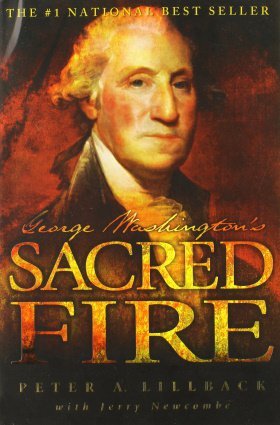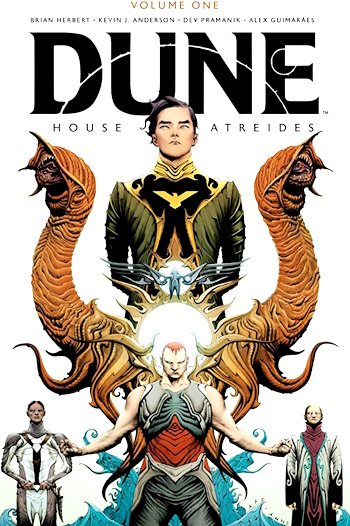O God, whose Name is excellent in all the earth, and thy glory above the heavens, who as on this day didst inspire and direct the hearts of our delegates in Congress, to lay the perpetual foundations of peace, liberty, and safety; we bless and adore thy glorious Majesty, for this thy loving kindness and providence. And we humbly pray that the devout sense of this signal mercy may renew and increase in us a spirit of love and thankfulness to thee its only author, a spirit of peaceable sub mission to the laws and government of our country, and a spir it of fervent zeal for our holy religion, which thou hast preserved and secured to us and our posterity. May we improve these inestimable blessing for the advancement of religion, liberty, and science throughout this land, till the wilderness and solitary place be glad through us, and the desert rejoice and blossom as the rose. This we beg through the merits of Jesus Christ our Saviour. Amen56
The Proposed Book of Common Prayer of 1785 was especially the work of the patriots of the Revolution, with much of the work having been done by Reverend William White. Reverend Mason Gallagher explained the importance of this book from the perspective of the Low Church tradition:
The same spirit which led the Puritans under Elizabeth and James to struggle and suffer for freedom of conscience, and for the unadulterated truths of Holy Scripture, animated the Congregational, Presbyterian, Dutch and Lutheran pastors of the Revolution, and were it not for their incessant stirring, patriotic appeals from the pulpit and the rostrum, and their presence in the army, where they both fought and prayed, I feel assured that the War of Independence would never have issued in the success of the Colonists. I am aware that there were noble exceptions to the course of the Protestant Episcopal clergy in espousing the cause of the mother country. The names of Bishops White and Provoost, Dr. William Smith of Philadelphia, Peter Muhlenberg, and Dr. Griffith, (Bishop-elect) of Virginia, and Robert Smith of South Carolina, afterwards a bishop, were foremost among those who sympathized with the struggles of the patriot army; while Bishop Seabury of Connecticut, and his disloyal friends were exiled or imprisoned for giving aid and comfort to the oppressors of our grandsires.
… in this city [New York City] of Revolutionary fame, that Bishops White and Provoost, with Dr. Wm. Smith and Dr. Griffiths, were among the framers of the Prayer Book of 1785,…on whose principles this country first received its Episcopacy.57
What the Low Church clergyman would have us understand is that there were two streams of Episcopalian thought in post-revolutionary America. The movement under Bishop Seabury represented the Loyalist High Church view. The clergy of this tradition had been Tories and opposed Washington and the American Revolution. The second stream was the Low Church, composed of those clergymen who chose to stand with the patriots led by General Washington. Consistent with their patriotic spirit was the inclusion of the special service to celebrate the Fourth of July in the Proposed Prayer Book. This did not seem to them to be inappropriate, since it paralleled the Anglican annual celebration of the Gunpowder Plot’s providential deliverance of the King and Parliament from Guy Fawkes’ destruction on November 5, 1605.58
A CHURCH LED BY LAYMEN
As the issue of governance surfaced, the historic concerns over bishops in America again arose, but not just in New England. This occurred in the South as well, as independent minded Americans felt a natural connection with their practice of lay-led churches. The Low Church Reverend Mason Gallagher wrote,
It is well known that the fear of the Establishment of an Episcopal Hierarchy on these shores was one of the causes which led the Colonists to desire separation from the mother country. The inherent nature of this intolerant system was thoroughly appreciated by the descendants of those who had so greatly suffered by it.
The diocese of South Carolina united with the other dioceses on the condition that no bishop should be placed over them. It afterwards elected Robert Smith, who had served as a private in the siege of Charleston. The conventions of Virginia were at first presided over by a layman. It is well known, also, that John Jay and James Duane, with Provoost and others, earnestly endeavored to prevent all ecclesiastical connection with Bishop Seabury after the Revolution.59
Bishop White of Philadelphia, before the possibility of ordaining an American bishop developed, conceived a view of Episcopalian governance that was quasi-Presbyterian in form60 and would have eventually opened the way for an American bishop.
But the Anglican leaders in New England did not wait. They sent Samuel Seabury to Scotland to be ordained by the Anglican bishops who had remained loyal to Charles Edward Stuart, a descendant of James II. These bishops refused to take an oath of loyalty to William and Mary. Because they had not sworn their oath to the crown, they came to be known as the “Non-Jurors.”
Thus, the predominance of laymen was a mark of the early Low Church Episcopal movement. The Reverend Gallagher explains:
It is eminently worthy of remark, that in the four primary Conventions in which Bishop Seabury was neither allowed presence nor influence, the lay element largely predominated. In all the succeeding Conventions the clergy were in the majority. In the First Convention, which settled the Prayer Book of 1785, three-fifths of the body were laymen. In the convention of 1789, which decided to admit Bishop Seabury, three-fifths of the number were clergymen.61
CONCLUSION
Washington was a churchman through and through. His life in the Anglican Church in the Colony of Virginia, far away from the Bishop of London, created a spirit of independence and self-sufficiency. These qualities led him and his fellow Virginian Anglicans to be Low Church adherents. But his commitment to the Low Church also meant that he was a believing Christian, and not a Deist. In a subsequent chapter we will address how these struggles between the High Church and the Low Church impacted Bishop William White in Philadelphia, and how this had a natural distancing effect between him and Washington. We believe this helps us to explain why Washington did not commune in Philadelphia.
SIXTEEN
George Washington and the Bible
“The blessed religion revealed in the Word of God.”
George Washington, (1789)
1
Things that people value manifest themselves in their conversations and compositions. Since George Washington loved farming at his lovely and tranquil Mount Vernon plantation, we anticipate his speaking of growing crops, the amount of rain, or improvements to his buildings. Perhaps surprisingly, or maybe unexpectedly, another of the things Washington valued enough to impact his thinking and writings are the scriptures. His writings are sprinkled with phrases and sentences from the Bible. It shows how well he knew the scriptures. We will here discover that it was second nature for him to use its language repeatedly. Not only was he biblically literate, he was communicating to people who were also biblically literate, since he fully expected his vast biblical vocabulary to illuminate rather than darken the understanding of his correspondents.
We have gone through and counted over two hundred different biblical allusions and expressions that come right into his writings from all parts of the scriptures. We find them repeatedly. The purpose of this chapter is to explore the pervasive impact the Bible made on his life and his beliefs.
But given what we have just claimed, it is important to note that Paul Boller strongly disagrees. He writes, “…there are astonishingly few references to the Bible in his letters and public statements.”2 This means we are completely incorrect in our claim, or that Boller doesn’t know the Bible well enough to see Washington’s biblical illusions. Perhaps he expected George Washington to list out the references or perhaps he did not read Washington as carefully as he should have.
However, those who are familiar with the scriptures and employ them in their communications generally don’t do that. When Abraham Lincoln said, “a house divided against itself cannot stand,” his hearers knew he was quoting the Bible. When Reverend John Winthrop said aboard the Arabella that the Pilgrim settlers would be as a “city on a hill,” his hearers knew he was quoting Jesus in the Sermon on the Mount. Usually, only a clergyman in a sermon spells out a Bible reference.
As we shall see in this chapter, there are hundreds of places in Washington’s writings, private and public, where he used biblical phrases and allusions.
POHICK CHURCH: “HEARING THE WORD OF GOD READ AND PREACHED”
As of this writing, the Reverend Dr. Donald Binder is the rector of Pohick Church, one of the key churches where Washington served for years as a lay leader (a vestryman). He points out that in George Washington’s day, the Anglican churches in Virginia placed a special emphasis on the Bible. Speaking of Pohick Church, Dr. Binder notes:
…this was known as an auditory church. The focus was on the Word of God, not on visual imagery. That was seen as too papist. So some of the things that you may see in the church today, the crosses, the candles, any ornamentation here would not have been here in Washington’s day. Those are sort of concessions to modern liturgical practices. In Washington’s day, the church was fairly plain, and the emphasis again was listening to the liturgy, participating in the liturgy, hearing the Word of God read and preached, and you have to remember this is a period not long after you were even allowed to hear the Bible in your own language. So this was something that they held as being very precious, something we tend to take for granted today. So the very fact that they could hear the word of God, expounded upon and read in their own language was just a very important thing to them, and so they set up their churches that way. You can see the pulpit looms over top of the boxes. It’s given really the focal point of the worship.3
THE PROMINENT ROLE OF THE BIBLE IN WASHINGTON’S LIFE
Following a common tradition, a Washington family Bible recorded his birth and baptism.4 He ordered Bibles for his children with their names printed on them in gold.5 He ordered a large family Bible.6 His stepson’s training included the Greek New Testament.7 He had Theodore Beza’s (a famous Protestant reformer) Latin Bible in his library that contained his late teenage signature.8 His children’s school textbooks often addressed biblical themes (as did his own childhood textbooks).9
Washington took the oath of office on a Bible from the Masonic Hall in New York City. When he did so, he also kissed it and added to the constitutional language, the phrase, “So help me God” as every subsequent president has done.10 The idea, given to him by Reverend John Rogers, to provide the entire Revolutionary soldiers with the newly printed Aiken’s American Bible pleased him.11
He told Charles Thomson that he read the first part of his translation of the Septuagint that Thomson had sent to him.12 His name was at the head of subscribers of an evangelical study Bible named, Brown’s Self-Interpreting Bible,13 which we will consider in the next section of this chapter.
He inherited an English bishop’s Bible, which he bequeathed to Bryan Fairfax,14 his childhood and adult friend and fellow fox-hunter, who also became his pastor in later life when he began worshipping in Alexandria. Bryan Fairfax’s friendship with Washington survived Fairfax’s outspoken Tory sympathies, his assumption of the title of Eighth Lord of Cameron after the War, and the establishment of the Constitution. Fairfax was ordained as an Anglican minister. A printed sermon by Fairfax, at about the time he was Washington’s pastor, is thoroughly orthodox and points to the doctrine of salvation by faith in Christ’s death on the cross.15 The sermon in its entirety is in the Appendix.
While he was president, Washington read a chapter from the Bible to his family before the family went to church on Sundays, according to his personal secretary Tobias Lear’s records.16 There are many anecdotes of Washington seen reading his Bible in devotions by those who were with him in his home or in his military quarters.17 The Bible was open at his bedside as he died, with his wife Martha at his side. Mrs. Washington’s grandson, who lived at Mount Vernon, says: ‘In that last hour, prayer was not wanting at the throne of grace. Close to the couch of the sufferer, resting her head upon that ancient book, with which she had been wont to hold pious communion a portion of every day for more than half a century, was the venerable consort [Mrs. Washington] absorbed in silent prayer.’18
WASHINGTON’S ENDORSEMENT OF BROWN’S SELF-INTERPRETING BIBLE
Paul Boller writes, “In 1792, when the ‘Self-Interpreting Bible’ of John Brown of Haddington, a Scotch Presbyterian, was published in New York, the list of subscribers was headed by ‘George Washington, Esq. President of the Untied States of America.’ The John Brown Bible had a wide circulation in the United Sates, but we have no way of knowing what use Washington made of his own copy.”19 George Washington was one of more than a hundred investors in the book—making its publishing possible by subscribing to it. While we do not know how extensively Washington used this Bible, we do know some very important things that Boller chose not to reveal if he was aware of them. First, we must understand how evangelical and biblically focused Brown’s Bible was. To demonstrate this, we must let the book speak for itself. So, consider the title page and the first introductory remarks:
The Self-Interpreting Bible Containing The Sacred Text Of the Old and New TESTAMENTS Translated from the Original Tongues, and with the former Translations Diligently Compared and Revised. To which are annexed, MARGINAL REFERENCES AND ILLUSTRATIONS, AN EXACT SUMMARY OF THE SEVERAL BOOKS, A PARAPHRASE ON THE MOST OBSCURE OF IMPORTANT PART AN ANALYSIS OF THE CONTENTS OF EACH CHAPTER EXPLANATORY NOTES, AND EVANGELICAL REFLECTIONS by the late Reverend John Brown Minister of the Gospel at Haddington Search the Scriptures, for in them ye think ye have eternal life, and these are they which testify of me, John v. 39 – To him give all the prophets witness, that, through his name, whosoever believeth in him shall receive remission of sins, Acts X. 43. Where a testament is, there must also of necessity be the death of the testator, Heb. 9:16. The Lamb slain from the foundation of the world, Reverend 13:8. New York: Printed by Hodge and Campbell And sold at their respective book stores [1792]
The Providence of God is particularly manifested in the preservation of the Holy Scriptures. To the Jews were committed the Oracles of God, and so faithful have they been to this sacred truth, that when copies of the law of the prophets were transcribed, they not only diligently compared the one with the other, but even counted the number of the letters in each and compared the numbers.

























